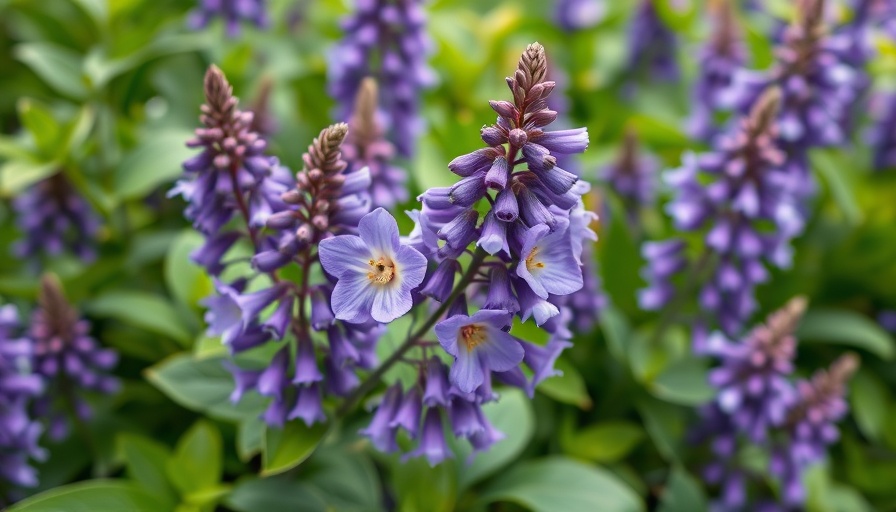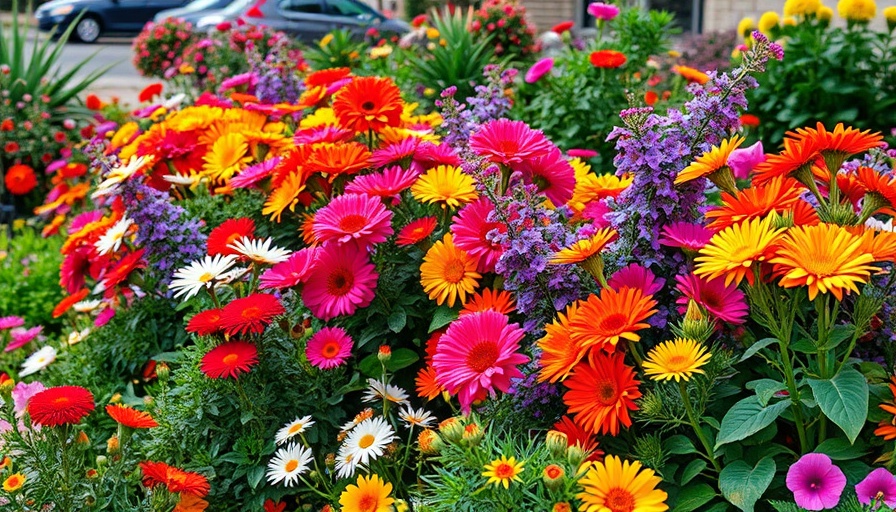
Discovering False Indigo: A Garden Gem
False indigo (Baptisia) is not just any flower; it is a centerpiece for any garden design aspiring for a touch of elegance and sustainability. This hardy perennial offers stunning blue blooms that redefine traditional aesthetics while thriving in low-maintenance conditions.
Why Grow False Indigo?
Emphasizing the importance of resilient garden plants is essential for aspiring gardeners. False indigo is celebrated not just for its beauty; it's also an environmentally friendly choice that supports local pollinators. As society becomes increasingly aware of sustainable practices, choosing plants like Baptisia represents a shift toward greener gardening projects.
Gardening Tips for Success
To cultivate false indigo effectively, consider the following gardening tips: select a well-drained location with full sun exposure, and be mindful of its natural growth habits. Baptisia prefers dry to average soil, making it an excellent choice for areas with poor drainage. This robust plant requires little water once established, which adds to its appeal as a sustainable option.
Plant Care and Maintenance
One of the best aspects of false indigo is its minimal care requirements. Annual pruning and occasional dividing of the plant will keep it thriving without overwhelming the gardener. Be sure to remove any dead foliage in early spring to promote healthy growth. Think of this as not just maintenance but an integral part of your garden’s aesthetic.
Landscaping Ideas to Enhance Your Space
False indigo can elevate any flower garden or backyard landscaping project. Pair it with other native plants to create a vibrant community in your green space. Consider grouping them alongside ornamental grasses or perennials to form a dynamic flower bed. This approach not only beautifies your garden but also fosters biodiversity, creating habitats for various garden wildlife.
Preventing Garden Pests with False Indigo
One of the standout qualities of Baptisia is its natural resistance to pests and diseases. Integrating it into your garden can lessen the need for chemical interventions, ultimately promoting a healthier garden ecosystem. However, always be observant; occasionally check for common garden pests and ensure that your plants remain in optimal health.
Creating a Vibrant Garden Ecosystem
The benefits of including false indigo extend beyond its visual appeal. This plant serves as a crucial food source for pollinators such as bees and butterflies, contributing to a thriving garden ecosystem. Encouraging wildlife in your backyard can lead to a more vibrant, lively garden that offers both beauty and ecological benefits.
Conclusion: Embrace the Beauty of False Indigo
False indigo is more than just a flower; it's a symbol of sustainable gardening and a beautiful addition to any landscape. By incorporating this plant into your garden, you invest in a greener future while also enhancing your outdoor space. However you choose to integrate it, let it inspire you to embark on more gardening adventures that promote wellness and nature conservation.
Now is the time to take these insights and make your garden a vibrant habitat. Start planning your flower garden today, focusing on sustainability and the inherent beauty of your chosen flora!
 Add Row
Add Row  Add
Add 




Write A Comment